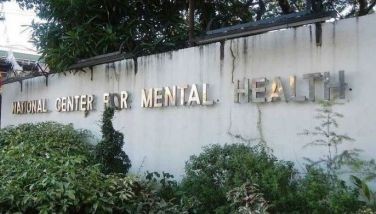Faith tourism thrives in Cebu
CEBU, Philippines — With churches of historical significance and where miracles reportedly happened, Cebu province has been drawing tourists as well as pilgrims wanting to renew their faith.
For instance, the Monastery of the Holy Eucharist or the Our Lady of Simala Shrine in Barangay Lindogon, Sibonga town attracts an estimated 2,000 to 3,000 people every day since the first reported miracle of the Virgin Mary, according to Sibonga’s acting tourism officer Dane Hermosisima.
Construction of the massive church on the slopes of the hills in Lindogon started in 2005 after a man named “Ingko Niyong” shared to monks from the Marian Monks of Eucharistic Adoration or MMEA that he dreamt of a “white woman” becoming the “center of many people in the mountain of sacrifice.”
Before the construction, the image of Our Lady of Fatima – now known as Our Lady of Simala covered in decorated pink cloak – was attributed to the recovery of many residents in Lindogon that fell ill to dengue during an apparent epidemic in 1998. The statue reportedly shed tears and released a scent of flowers, which both helped in their healing, shared Hermosisima.
The shrine also displays testimonies from devotees who attributed their successes in studies, employment and recovery from sicknesses to the revered image, all coupled with items related to their petitions like diplomas and wheelchairs.
Despite parts of the church still being erected, he said locals and foreigners, including students from church-run schools and pilgrims, continue to visit to the church, Hermosisima said.
The shrine also helped boost local tourism, with shops near the entrance and vendors selling or renting shawls to visitors wearing sleeveless shirts and shorts to comply to the strict dress code, he added.
The local government of Sibonga has deployed policemen to maintain order and holiness inside and around the shrine, he also said.
The Our Lady of Simala Shrine was among the churches in Cebu visited by 260 delegates of the eighth Winter Escapade tour program, organized by the Department of Foreign Affairs (DFA), the Department of Tourism (DOT) and its attached agency Tourism Promotions Board (TPB) and implemented by Rajah Tours Corporation.
The tourists – composed of Filipinos and their families as well as foreigners from Canada, the United States and Germany – also saw the Archdiocesan Shrine of San Miguel Arcangel in the town of Argao, built by the Augustinians in 1788 and restored in 2016.
The church features designs with Chinese and Mexican influence like the Chinese lion and the Mexican eagle, as well as the pipe organ and ceiling paintings believed to be as old as the church itself with some of them also repaired.
Tour guide Grace Melendres, who accompanied the Winter Escapade tour last February 23, 2024, shared pilgrimage tours were formulated to supposedly coincide with the 500th anniversary of the arrival of Christianity in the Philippines in 2021, when COVID-19 remained a global threat to public health.
She said pilgrimage tours were a result of the devotion to the Sto. Niño de Cebu, brought by explorer Ferdinand Magellan in 1521 according to historical records.
Currently being offered to tourists and pilgrims, the said tours would bring them to churches and historical sites in the southern part of Cebu like Sibonga and Argao, as well as at the northern side and at Metropolitan Cebu, she added.
For his part, Winter Escapade participant Fr. Nilo Macapinlac – an Ilonggo priest at the Archdiocese of Edmonton in Canada – said the Philippines is teeming with “heavenly treasures” particularly “beautiful shrines, churches that are of antiquity and precious in historical significance.”
Speaking to The STAR, he said the Church is facing the challenge of today’s generation of young people urged “not to lose the salt of faith.”
He hoped faith tourism could promote “wellness of the body and the spirit,” as well as promote “ecumenism as a path for unity and progress.” (CEBU NEWS)
- Latest






















